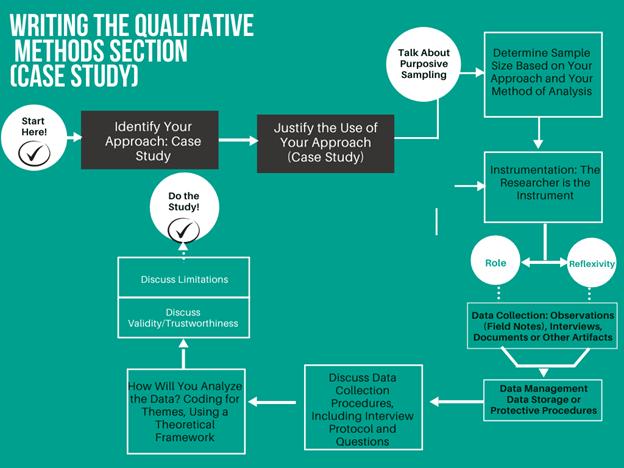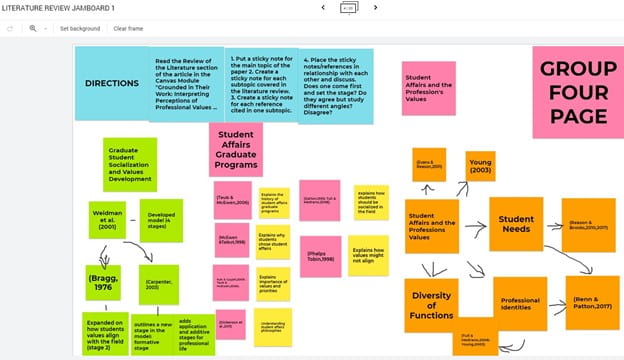Snapshot
Name and Title: Dr. Candace Hastings, Director, Faculty Development, Lecturer, Student Affairs in Higher Education, CLAS
Class that will be showcased: Research Methods 5387
Is this an undergraduate or graduate class? Graduate
What is the size of the class? 21 students
SAHE 5387 is an introduction to research methods for first semester graduate students. Students learn about quantitative and qualitative research approaches and write sections of a research proposal.
We meet Wednesday evenings for three hours using a HyFlex approach. Some students only attend by ZOOM; others swap out attending from week to week because of the room size. At first, about half of the students indicated they wanted to attend F2F but later began attending by ZOOM, so there has been some fluctuation in the F2F attendance. The ZOOM/F2F sessions are supplemented with Canvas modules. Sometimes students work together on module activities during class time; other times module activities are completed outside of class as a step-by-step progression to completing major assignments.
I must confess that I do not have all this HyFlex teaching figured out yet. I sometimes lose my toolbar or have difficulty figuring out the source of ambient noise my ZOOM students are complaining about or forget to tell my breakout groups important information before I send them off to do groupwork. Everything takes longer, and there are awkward silences when you think your hair is on fire while you try to figure out why you are sharing your dog’s photo instead of the Power Point.
But I am here to tell you, when those things happen, and they will, it’s okay. In fact, I think one of the most important things I have figured out about teaching using the HyFlex approach is developing technical expertise is important, but it is not the key to success. Rather, being intentional and consistent in creating a trusted academic community with a shared collective goal has been the game changer.
Here are a few things that have worked for me:
My class is ungraded. Each major assignment is worth a certain number of points, but when students turn in written assignments, they receive an “accept,” “revise,” or “consult and revise” on their proposal sections. I have used this technique before in teaching graduate students, but I also used it when I taught first-year English composition at community colleges. I find it reframes my role. I am now a coach, helping them improve so they can reach their academic goals.
One thing I did change due to the pandemic to keep myself and my students motivated was to explicitly tie learning outcomes to revision tasks. Instead of revising the entire paper, I select a section of the paper to revise and have them focus only on the learning outcomes they did not master. That way the revision can be targeted and explicitly tied to mastery. As a result, revisions have been almost always on point. I will be keeping that strategy post-pandemic.
I also require students to run drafts of their major assignments through Turnitin and address any issues or consult with me about questions they have about their report before turning in the final draft. We often look at the draft report together and discuss ways to address problems. I set the program to include quoted material so we can look for overquoting or dropped quotes as well. My goal in using Turnitin is to help students improve their ability to integrate references elegantly into their work.
However, my investment in their success is only one part of creating community: students must be invested in their success and the success of their peers. In a F2F graduate class, I usually assign a reading topic and in seminar style, we work through the ideas through discussion and Q&A, using a Power Point if needed. A strategy that had worked for the past ten years did NOT work in this medium. How did I know it did not work? One of the students emailed me and flat out told me I was going too fast and the class, specifically the ZOOM students, needed some type of visual guide to follow along. Ouch. That was hard to hear. I brooded the entire weekend, trying to figure out why what I had always done was not working anymore. I decided to break down difficult concepts and processes into a graphic representation. Here is one I put together for the methods section of a qualitative research proposal:
The students appreciated the effort, and I respected their honesty. One evening I was having a particularly difficult week and fell behind in posting material to Canvas, so I decided to be honest back. I looked at them point blank and said, “I know you all are facing the difficult time of going to grad school in a pandemic, but I need you to know that I am living in the pandemic too, and this week I’m having a hard time.” When we recognize that we are all in this pandemic together, we can act in concert to support one another.
To drive this point home, I started a “fan favorite” competition. The class will vote at the end of the semester for the student in the class who has been the most instrumental in helping other students in the class succeed. In addition, I asked students to send me a song that represents their educational journey. I made a Spotify playlist of those songs and sent them to the class. We will have a contest at the end of class to see how many can match the songs and students correctly. I also listen to the playlist when I review their major assignments to help me stay mindful.
The other benefit from creating a community where students have agency and autonomy is that you do not have to do everything yourself. You can engage students and offload some of your burden at the same time. If I get stuck on a tech issue, I just ask the students. And I have students teach each other. In the following example, students took the literature review of a published article and worked together to visualize how the author positioned the studies and then taught the concept to the class using Jamboard.
This has been one of most challenging semesters in my teaching career. It has also been one of the most rewarding and transformative teaching experiences of my career. I have figured out that I do not have to be an IT specialist, but I do need to be a strong leader and a good listener who can create an academic community that is self-sufficient and committed to the success of all.


This article is so full of suggestions that I can incorporate into my teaching. The “accept,” “revise,” or “consult and revise” grade scale is definitely a viable option for my assignments. Thank you so much Candace!